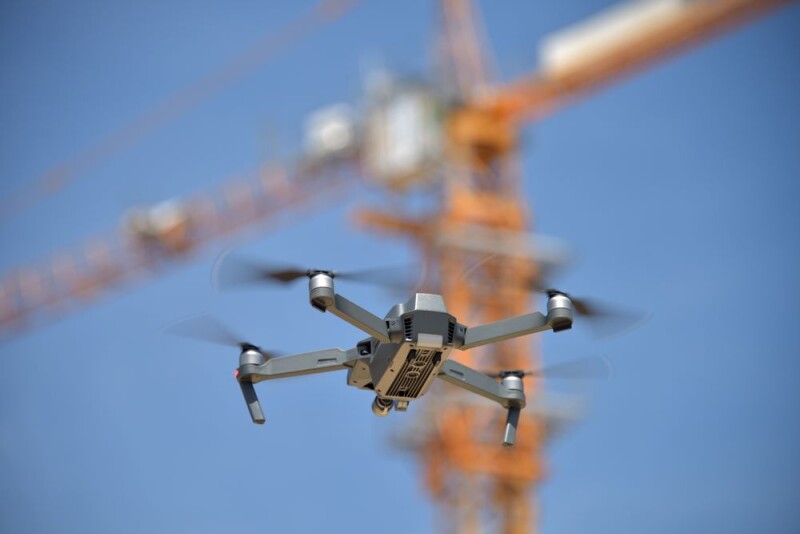Earlier this week, DroneDeploy released their State of Reality Capture report, looking at some trends around the broad reality capture market at this moment in time. This was their first-ever edition of this report after having previously released “State of the Drone Industry” reports, and they say this is the industry’s “biggest global survey to date.”
As a provider of reality capture software who initially served drone-focused clients, the sample of respondents may not be entirely representative of the industry more broadly – for example, nearly 100 percent of their respondents indicated they used drones to capture data, a number I don’t think completely reflects the industry – it’s still telling enough that there are some interesting takeaways from the report.
Before getting into some of the findings from DroneDeploy, it’s worth pointing out the demographics of respondents. Overally, they polled 1447 workers in the industry representing 119 countries. In terms of nations represented, the United States is home to nearly half of the respondents at 48 percent, with Australia, Canada, Brazil, the United Kingdom, and New Zealand all coming in between two and five percent.
Broadly speaking, the report focused on three sectors: AEC, Oil and Gas, and renewable energy, with AEC making up the majority of respondents. About 70 percent of companies were made up of 99 or fewer employees (an unsurprising ratio since most companies in general fall in that range), with 12 percent employing at least 1,000 people. Finally, top-level workers were most represented, with 46 percent of respondents being described as either top-level management or owners.
That is important context for this, but as I said above there are plenty of interesting nuggets laid out through this 65-page report, some of which are outlined below.
Looking at usage
In terms of who is actually using this reality capture technology, the results are probably what one would expect, particularly when looking at which companies use it. Specifically, bigger companies are using the technology – and specifically, the software – more than smaller ones, with responses indicating that companies with at least 100 employees are 33 percent more likely to adopt than those with 99 or fewer. This, of course, makes inherent sense – companies with more employees are likely to have more resources in general, and getting started with these tools requires capital.
In terms of industry, the AEC sector is far and away leading the pack among respondents for this survey in terms of usage, with three-quarters of enterprise businesses (i.e. 100 or more employees) saying they are already using this technology, with an additional 21 percent having plans to implement reality capture tools. That leaves just a tiny four percent who have no plans. Of course, we know plans don’t always come through so it’s likely not all within that 21 percent actually come through on their plans, at least on their planned timeline, but that’s still speaks volumes about reality capture’s place in AEC already.

How is reality capture being used?
Perhaps the most interesting piece of this report was less about who is using this technology, but rather how they’re utilizing it. As noted above, nearly everyone who responded, 96 percent to be exact, use drones to carry their sensors. That’s followed by half indicating they use mobile or handheld carrying sensors, 36 percent using tripods, and 19 percent using fixed site cameras or sensors. Interestingly, every respondent said they use high-resolution cameras for capture – again, this presumably has something to do with this being a DroneDeploy survey, but that number is still telling – with 56 percent saying they use 360 cameras and the same rate of respondents responding with lidar or laser cameras.
Another piece of this report that I found to be particularly interesting was not just about the equipment being used, but who was actually capturing the data. My initial assumption would have been that a significant portion – perhaps even the majority – of firms would outsource this, but this survey gives a different impression. Based on these respondents, 69 percent of firms do all of this data capture work themselves, with only 14 percent completely outsourcing it and the remainder taking a hybrid approach. Thinking more about the survey as a whole, this makes more sense considering it’s mostly larger firms who are using this technology, and they’re more likely to have expertise on their own staff, but I think this also speaks volumes about how far the technology has come in terms of price accessibility and ease-of-use.
Other takeaways
This a dense report with plenty of information, and certainly more than we can cover here in a blog post. That said, there are a couple of other findings I wanted to point out, starting with a look at what respondents say is their biggest problem with the industry right now. That’s the fact that right now workflows include too many fragmented solutions. 76 percent of respondents indicated that they are using fragmented solutions, with over half saying that leads to wastes of valuable time switching between solutions, and 41 percent complaining about the costs of training on all of these different solutions. We’ve talked in the past about consolidation coming for many of these industries, and reality capture is definitely part of that group.
Finally, I’d point to some of the forward-looking responses. In the more near-term, 62 percent of companies said they plan to spend more on reality capture in 2024 compared to the previous year. Given that at least parts of budgets for the year have been set at this point, this feels like it should be an accurate portrayal of the industry, and a positive sign for it broadly.
Looking a bit further down the line, 16 percent say this technology will be ubiquitous in two years, and 92 percent say in five years reality capture will be key to staying competitive in their respective industries. To me, that first bit feels optimistic by at least a half-decade (those already using technology tend to overestimate how quickly non-users will adopt, at least in my experience), but the latter feels right.
Overall, as we’ve mentioned a few times I don’t think we can say for sure these results totally represent the industry as a whole. That’s probably not possible for a specific company to pull off as responses will skew towards their typical user base, even if the survey goes outside of it, and likely requires an independent third-party to truly get that kind of data. That said, the report paints a rosy outlook for reality capture in general moving forward, and generally speaking it’s hard to argue with that.
Dowload the entire report here.






